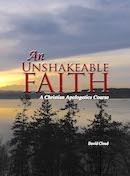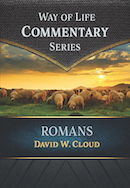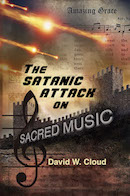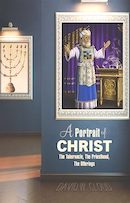866-295-4143, fbns@wayoflife.org

Following is a refutation of the myth of the Jesus myth:
1. The historicity of Jesus was not disputed until recent times.
Had there been any question whatsoever about the actual existence of Jesus, the opponents of Christianity in the early centuries would have used this to refute Christianity’s legitimacy, but this was never done.
The Encyclopedia Britannica says:
“These independent accounts prove that in ancient times even the opponents of Christianity never doubted the historicity of Jesus, which was disputed for the first time and on inadequate grounds by several authors at the end of the 18th, during the 19th, and at the beginning of the 20th centuries” (“Jesus Christ,” Encyclopedia Britannica, 1974).
Historian Jaroslav Pelikan observes:
“Regardless of what anyone may personally think or believe about him, Jesus of Nazareth has been the dominant figure in the history of Western culture for almost twenty centuries” (Jesus Through the Centuries, p. 1).
2. The New Testament, which is the major witness of Jesus, is an historical record of the highest authority, even from a secular standpoint.
The evidence that the New Testament was written soon after Christ’s death is irrefutable. We have already examined this evidence in the section on “The Bible’s Nature.”
In his book Redating the New Testament, John A.T. Robinson concluded that the whole of the New Testament was written before the fall of Jerusalem in AD 70.
William Ramsay, one of the most renowned archaeologists, wrote:
“We can already say emphatically that there is no longer any solid basis for dating any book of the New Testament after about AD 80, two full generations before the date between 130 and 150 given by the more radical New Testament critics of today” (Recent Discoveries in Bible Lands, 1955, p. 136).
“In my opinion, every book of the New Testament was written by a baptized Jew between the forties and the eighties of the first century AD.” (Christianity Today, Jan. 18, 1963).
Beginning with the first century itself, we have solid historical evidence that the New Testament existed and was commonly recognized as Scripture by the believers. We have the extant writings of men who knew the apostles personally. These include Clement of Rome, Ignatius, and Polycarp. Thus there is no gap between the writing of the New Testament and the historical record that exists of it.
Portions of the New Testament exist dating to the late first and early second centuries, only a few decades after the books were written. No other ancient book comes close to having such clear manuscript authority.
Consider some of the early historical evidences witnessing to the authenticity of the New Testament:
Clement of Rome was taught directly by some of the apostles. He was an elder in the church at Rome beginning in AD 88, only 30 years after Paul wrote his epistle to Rome. “Clement of Rome, whose first letter to the Corinthians is usually dated about AD 96, made liberal use of Scripture, appealing to its authority, and used New Testament material right alongside Old Testament material. He clearly quotes from Hebrews, 1 Corinthians and Romans and possibly from Matthew, Acts, Titus, James and 1 Peter. Here is the bishop [pastor] of Rome, before the close of the first century, writing an official letter to the church at Corinth wherein a selection of New Testament books are recognized and declared by episcopal authority to be Scripture, including Hebrews” (Wilbur Pickering, The Identity of the New Testament Text).
Ignatius (c. AD 110) referred to “all the epistles of Paul.”
Polycarp personally knew the apostle John and other believers who were eyewitnesses of Jesus’ resurrection. In his letter to the Philippian church in about 115 AD, Polycarp “weaves an almost continuous string of clear quotations and allusions to New Testament writings. ... There are perhaps fifty clear quotations taken from Matthew, Luke, Acts, Romans, 1 and 2 Corinthians, Galatians, Ephesians, Philippians, Colossians, 1 and 2 Thessalonians, 1 and 2 Timothy, 1 and 2 Peter, and 1 John, and many allusions including to Mark, Hebrews, James, and 2 and 3 John. (The only NT writer not included is Jude!)” (Pickering).
Justin Martyr (died 165 AD) testified that the churches of his day met on Sundays and “read the memoirs of the apostles or the writings of the prophets” (Apology, I, 67).
Irenaeus (died in 202 AD) left many works which are still extant. Their translation into English covers between 600-700 pages in the Ante-Nicene Library. “Irenaeus stated that the apostles taught that God is the Author of both Testaments (Against Heretics IV, 32.2) and evidently considered the New Testament writings to form a second Canon. He quoted from every chapter of Matthew, 1 Corinthians, Galatians, Ephesians, Colossians and Philippians, from all but one or two chapters of Luke, John, Romans, 2 Thessalonians, 1 and 2 Timothy, and Titus, from most chapters of Mark (including the last twelve verses), Acts, 2 Corinthians, and Revelation, and from every other book except Philemon and 3 John. These two books are so short that Irenaeus may not have had occasion to refer to them in his extant works--it does not necessarily follow that he was ignorant of them or rejected them. Evidently the dimensions of the New Testament Canon recognized by Irenaeus are very close to what we hold today” (Pickering).
Irenaeus heard Polycarp preach and relate accounts from his time with John and other first century Christians. In his letter to Florinus, Irenaeus wrote the following: “I could tell you the place where the blessed Polycarp sat to preach the Word of God. It is yet present to my mind with what gravity he everywhere came in and went out; what was the sanctity of his deportment, the majesty of his countenance; and what were his holy exhortations to the people. I seem to hear him now relate how he conversed with John and many others who had seen Jesus Christ, the words he had heard from their mouths.”
Thus we have the extant writings of men who knew the apostles and first century Christians personally and who quoted from the New Testament books.
This is irrefutable evidence that the New Testament existed then and that it was the same as the New Testament that we have today.
Even some naturalistic textual critics have concluded that the New Testament in its current 27-book canon existed in Greek no later than the middle of the 2nd century. See David Trobisch, The First Edition of the New Testament, Oxford/New York: Oxford University Press, 2000.
From the second century we have evidence that it was customary for each church to have its own copy of the writings of the apostles that they might read and preach from them. “And on the day called Sunday there is a meeting in one place of those who live in cities or the country, and the memoirs of the apostles or the writings of the prophets are read as long as time permits. When the reader has finished, the president in a discourse urges and invites us to the imitation of these noble things” (Justin Martyr, Apology).
Dr. Wilbur Pickering observes: “Both Justin Martyr and Irenaeus claimed that the Church was spread throughout the whole earth, in their day ... IT BECOMES CLEAR THAT THERE MUST HAVE BEEN THOUSANDS OF COPIES OF THE NEW TESTAMENT WRITINGS IN USE BY 200 AD” (The Identity of the New Testament Text).
In about the year 208, Tertullian mentioned churches founded by the apostles and indicated that the “authentic writings” were still extant and were the absolute standard by which the truth was measured in the believing churches. He urged heretics to “run to the apostolic churches, in which the very thrones of the apostles are still pre-eminent in their places, IN WHICH THEIR OWN AUTHENTIC WRITINGS ARE READ, UTTERING THE VOICE AND REPRESENTING THE FACE OF EACH OF THEM SEVERALLY. Achaia is very near you, (in which) you find CORINTH. Since you are not far from Macedonia, you have PHILIPPI; (and there too) you have the THESSALONIANS. Since you are able to cross to Asia, you get EPHESUS. Since, moreover, you are close upon Italy, you have ROME, from which there comes even into our own hands the very authority (of the apostles themselves)” (Tertullian, Prescription against Heretics, 36, cited from Pickering).
Pickering observes: “Some have thought that Tertullian was claiming that Paul’s Autographs were still being read in his day (208), but at the very least he must mean they were using faithful copies. Was anything else to be expected? for example, when the Ephesian Christians saw the Autograph of Paul’s letter to them getting tattered, would they not carefully execute an identical copy for their continued use? Would they let the Autograph perish without making such a copy? (There must have been a constant stream of people coming either to make copies of their letter or to verify the correct reading.) I believe we are obliged to conclude that in the year 200 the Ephesian Church was still in a position to attest the original wording of her letter (and so for the others)...”
Compare this wealth of ancient evidence for the Bible with that of other famous books of antiquity:
-------- Date Written - Earliest Copy - Time Span
Plato - 350 B.C. - 900 A.D. - 1250 years
Herodotus - 450 B.C. - 900 A.D. - 1350 years
Euripedes - 450 B.C. - 1100 A.D. - 1500 years
Caesar - 50 B.C. - 900 A.D. - 950 years
Tacitus - 100 A.D. - 1100 A.D. - 1000 years
Aristotle - 350 B.C. - 1100 A.D. - 1450 years
Sophocles - 450 B.C. - 1000 A.D. - 1550 years
Homer (Iliad) - 900 B.C. - 400 B.C. - 500 years
Consider Homer’s Iliad and Odyssey. They were composed in the eighth century BC, but the oldest fragments date to at least 500 years later. And the oldest entire manuscripts of Homer’s writings are from the 10th and 11th centuries AD, at least 1,800 years after their writing. There are different editions of the stories, and it is impossible to know what the original said in any detail.
Consider the writings of Confucius, China’s most famous ancient philosopher. The main book containing his teaching is Analects, but it took shape over a period of hundreds of years, from about 470 BC to AD 200. The oldest extant portion dates to about 50 BC, which is more than 400 years after Confucius’ death.
The same is true for the Hindu scriptures. The Vedic texts, such as the Upanishads, were transmitted orally for hundreds of years before being committed to writing, and there is absolutely no way to know if the extant texts are accurate representations of the original statements. It isn’t even known for sure who created them, when, where, and under what circumstances.
J. Harold Greenlee observes:
“Since scholars accept as generally trustworthy the writings of the ancient classics even though the earliest MSS were written so long after the original writings and the number of extant MSS is in many instances so small, it is clear that the reliability of the text of the N.T. is likewise assured” (Introduction to New Testament Textual Criticism, p. 16).
Liberal Bible critics apply standards to the Bible that they do not apply to other ancient writings.
(For more on canonization and preservation see Faith vs. the Modern Bible Versions, which is available from Way of Life Literature.)
3. There is evidence for the existence of Jesus from extra-biblical sources.
Some of the following examples are from Josh McDowell, The New Evidence That Demands a Verdict:
Cornelius Tacitus (AD 59-117), an early second century Roman historian -
“Christus, from whom the name [Christianity] had its origin, suffered the extreme penalty during the reign of Tiberius at the hands of one of our procurators, Pontius Pilatus...” (Annals XV.44, c. 115 AD).
Suetonius, chief secretary to Emperor Hadrian (who reigned from AD 117-138) -
“As the Jews were making constant disturbances at the instigation of Chrestus, he expelled them from Rome” (Life of Claudius, 25:4).
Werner Keller observes:
“The writer Orosius mentions that this expulsion took place in the ninth year of Claudius’ reign, i.e., AD 49. That means that a Christian community is attested in Rome not more than fifteen to twenty years after the Crucifixion. There is, in the Acts of the Apostles, an amazing corroboration of this Roman evidence. When Paul came from Athens to Corinth he found there ‘a certain Jew named Aquila, born in Pontus, lately come from Italy, with his wife Priscilla: because that Claudius had commanded all Jews to depart from Rome’ (Acts 18:2)” (The Bible as History, pp. 390, 391).
Josephus (AD 37-100)
Josephus was a Jewish leader who served under Roman emperors and wrote two histories about the Jews: Jewish Wars and Antiquities of the Jews. In the following passages he acknowledges the existence of Jesus, of John the Baptist and his baptism, and of Jesus’ brother James and his martyrdom. These statements are widely accepted as genuine:
“But the younger Ananus who, as we said, received the high priesthood, was of a bold disposition and exceptionally daring; he followed the party of the Sadducees, who are severe in judgment above all the Jews, as we have already shown. As therefore Ananus was of such a disposition, he thought he had now a good opportunity, as Festus was now dead, and Albinus was still on the road; so he assembled a council of judges, and brought before it the brother of Jesus the so-called Christ, whose name was James, together with some others, and having accused them as law-breakers, he delivered them over to be stoned” (Antiquities, 20.9.1).
“Now, some of the Jews thought that the destruction of Herod’s army came from God, and very justly, as a punishment of what he did against John, who was called the Baptist; for Herod slew him, who was a good man, and commanded the Jews to exercise virtue, both as to righteousness towards one another and piety towards God, and so to come to baptism” (Antiquities, 28.5.2).
There is another statement about Jesus in Josephus’ Antiquities, as follows, but there is some question about its authenticity:
“Now there was about this time Jesus, a wise man, if it be lawful to call him a man, for he was a doer of wonderful works, a teacher of such men as receive the truth with pleasure. He drew over to him both many of the Jews, and many of the Gentiles. He was the Christ, and when Pilate, at the suggestion of the principal men among us, had condemned him to the cross, those that loved him at the first did not forsake him; for he appeared to them alive again the third day; as the divine prophets had foretold these and ten thousand other wonderful things concerning him. And the tribe of Christians so named from him are not extinct at this day” (Antiquities, 18.3.3.).
“[V]ery few scholars hold that the entirety of the passage is genuine. It is doubtful, however, that the entire passage was ‘made up,’ but rather that interpolations were added at a later stage” (“Did Jesus Exist?” knowwhatyoubelieve.com).
Mara Bar-Serapion
He was a Syrian philosopher who wrote about AD 70. In a letter to his son he said:
“What advantage did the Jews gain from executing their wise king? It was just after that their kingdom was abolished” (Robert Van Voorst, Jesus Outside the New Testament, pp. 53-55).
Pliny the Younger (AD 61-113)
He was a Roman author and administrator. In a letter to the Emperor Trajan in about AD 106 he mentions Christ and the worship practices of early Christians.
“They were in the habit of meeting on a certain fixed day before it was light, when they sang in alternate verses a hymn to Christ, as to a god, and bound themselves by a solemn oath, not to do any wicked deeds, but never to commit any fraud, theft or adultery, never to falsify their word, nor deny a trust when they should be called upon to deliver it up; after which it was their custom to separate, and then reassemble to partake of food--but food of an ordinary and innocent kind” (Pliny’s Letters, Book 10, Letter 96).
The Talmud
The Jewish Talmudic writings dating from AD 70 to 200 mention Jesus. If there were any doubt about Jesus’ existence, we can be sure that the Jewish rabbinical writers would have said so!
“It has been taught: On the eve of Passover Yeshu was hanged. ... not having found anything in his favor, they hanged him on the eve of Passover“ (Babylonian Talmud, Sanhedrin 43a).
In his History of the Talmud (1918), Talmudic scholar Michael Rodkinson acknowledged the existence of Jesus. He mentions Rabbi Johanan Zakkai, who lived in the time of the destruction of the second temple, which occurred in AD 70. We see from the following statement that Zakkai disputed with “Messiahists” who followed the teaching of Jesus.
“Thus the study of the Talmud flourished after the destruction of the Temple, although beset with great difficulties and desperate struggles. All his days, R. Johanan b. Zakkai was obliged to dispute with Sadducees and Bathueians and, no doubt, with the Messiahists also; for although these last were Pharisees, they differed in many points from the teaching of the Talmud after their master, Jesus, had broken with the Pharisees” (Rodkinson, The History of the Talmud, volume 1, chapter 2).
Rodkinson stated that the Talmud originally contained passages about Jesus and his teaching, but these were expunged later due to persecution by Catholics due to the slanderous way that Jesus was referred to. Rodkinson said the Talmud mentioned Jesus’ birth (which is attributed to Mary’s fornication with a Roman soldier named Pantera), his claim to be God, his disciples, his miracles (which are attributed to sorcery), and his crucifixion on the eve of the Passover. In the Talmud, Jesus was called “Yeshu,” “Such-an-one,” “Pantera,” and “Ben Pantera” (son of Pantera).
In Christianity in Talmud and Midrash, R. Travers Herford states that the Talmud states that Mary was “descended from princes and rulers.”
Lucian of Samosata (b. AD 120)
Lucian was a second-century Greek writer who ridiculed Christians as follows:
“"The Christians, you know, worship a man to this day—the distinguished personage who introduced their novel rites, and was crucified on that account. … You see, these misguided creatures start with the general conviction that they are immortal for all time, which explains their contempt of death and voluntary self-devotion which are so common among them; and then it was impressed on them by their original lawgiver that they are all brothers, from the moment that they are converted, and deny the gods of Greece, and worship the crucified sage, and live after his laws. All this they take quite on faith, with the result that they despise all worldly goods alike, regarding them merely as common property”” (Lucian, The Passing of Peregrinus).
Norman Geisler summarizes the evidence as follows:
The primary sources for the life of Christ are the four Gospels. However there are considerable reports from non-Christian sources that supplement and conform to the Gospel accounts. These come largely from Greek, Roman, Jewish, and Samaritan sources of the first century. In brief they inform us that:
* Jesus was an historical man from Nazareth.
* He lived a wise and virtuous life.
* He was crucified in Palestine under Pontius Pilate during the reign of Tiberius Caesar at Passover time, being considered the Jewish King.
* He was believed by his disciples to have been raised from the dead three days later.
* His enemies acknowledged that he performed unusual feats they called ‘sorcery.’
* His small band of disciples multiplied rapidly, spreading even as far as Rome.
* His disciples denied polytheism, lived moral lives, and worshiped Christ as Divine.
This picture confirms the view of Christ presented in the New Testament Gospels (Geisler, Baker Encyclopedia of Christian Apologetics).
Edwin Yamauchi, professor of history at Miami University, says that we have more and better historical documentation for Jesus than for any other religious founder (e.g., Zoroaster, Buddha, or Mohammed) (“Jesus Outside the New Testament: What Is the Evidence?” Jesus Under Fire, edited by Michael Wilkins and J.P. Moreland, 1995).
There are scoffers who reject all of this evidence, but this is the result of self-willed blindness. The human heart is so corrupt that it is possible to persist in unbelief in the face of a mountain of evidence. “The heart is deceitful above all things, and desperately wicked: who can know it?” (Jeremiah 17:9).
On the other hand, many men and women who set out to discredit the Bible and to disprove that Jesus Christ is the Son of God have ended up accepting the evidence as irrefutable and have bowed before Christ as Lord and Saviour. We have given some examples of this in the report “Men Who Were Converted Trying to Disprove the Bible,” available at www.wayoflife.org.
4. Even most liberal theologians acknowledge Jesus’ existence.
The “Jesus myth” view is a cranky, extreme minority view. Two of the men who have written refutations of Timothy Freke’s book The Jesus Mysteries are Bart Ehrman and John Dominic Crossan, who are among the most liberal of theologians.
“The debate over Jesus’ existence has led to a curious role reversal. Two of the New Testament scholars who are leading the way arguing for Jesus’ existence have a reputation for attacking, not defending, traditional Christianity. Ehrman, for example, is an agnostic who has written books that argue that virtually half of the New Testament is forged. Another defender of Jesus’ existence is John Dominic Crossan, a New Testament scholar who has been called a heretic because his books challenge some traditional Christian teachings. But as to the existence of Jesus, Crossan says, he’s certain’” (“The Jesus Debate: Man vs. Myth,” CNN Belief Blog, April 7, 2012).
Ehrman says most Jesus deniers are Internet kooks, comparing them to Holocaust deniers.
5. Jesus Christ is alive and can be known personally.
“For the which cause I also suffer these things: nevertheless I am not ashamed: for I know whom I have believed, and am persuaded that he is able to keep that which I have committed unto him against that day” (2 Timothy 1:12).
The apostle Paul, who penned these words, was a staunch opponent of Jesus and of Christianity. Humanly speaking, he had nothing to gain by confessing Jesus as Christ and Lord. The fact that he did so is evidence of Christ’s resurrection.
Down through the centuries, multitudes of others have joined their voices with Paul in saying, “I know whom I have believed.”
True Christianity is not a mere religion. It is a personal relationship with the eternal God through Jesus Christ.
“And this is life eternal, that they might know thee the only true God, and Jesus Christ, whom thou hast sent” (Joh 17:3).
For more on this subject see the following:
Norman Geisler -- Baker Encyclopedia of Christian Apologetics, When Critics Ask, When Skeptics Ask
Gary Habermas -- The Historical Jesus
Josh McDowell - The New Evidence that Demands a Verdict
- Receive these reports by email
- www.wayoflife.org
______________________
Sharing Policy: Much of our material is available for free, such as the hundreds of articles at the Way of Life web site. Other items we sell to help fund our expensive literature and foreign church planting ministries. Way of Life's content falls into two categories: sharable and non-sharable. Things that we encourage you to share include the audio sermons, O Timothy magazine, FBIS articles, and the free eVideos and free eBooks. You are welcome to make copies of these at your own expense and share them with friends and family. You may also post parts of reports and/or entire reports to websites, blogs, etc as long as you give proper credit (citation). A link to the original report is very much appreciated as the reports are frequently updated and/or expanded. Things we do not want copied and distributed are "Store" items like the Fundamental Baptist Digital Library, print editions of our books, electronic editions of the books that we sell, the videos that we sell, etc. The items have taken years to produce at enormous expense in time and money, and we use the income from sales to help fund the ministry. We trust that your Christian honesty will preserve the integrity of this policy. "For the scripture saith, Thou shalt not muzzle the ox that treadeth out the corn. And, The labourer is worthy of his reward" (1 Timothy 5:18). Questions? support@wayoflife.org
Goal:Distributed by Way of Life Literature Inc., the Fundamental Baptist Information Service is an e-mail posting for Bible-believing Christians. Established in 1974, Way of Life Literature is a fundamental Baptist preaching and publishing ministry based in Bethel Baptist Church, London, Ontario, of which Wilbert Unger is the founding Pastor. Brother Cloud lives in South Asia where he has been a church planting missionary since 1979. Our primary goal with the FBIS is to provide material to assist preachers in the edification and protection of the churches.
Offering: Offerings are welcome if you care to make one. If you have been helped and/or blessed by our material offerings can be mailed or made online with with Visa, Mastercard, Discover, or Paypal. For information see: www.wayoflife.org/about/makeanoffering.html.





